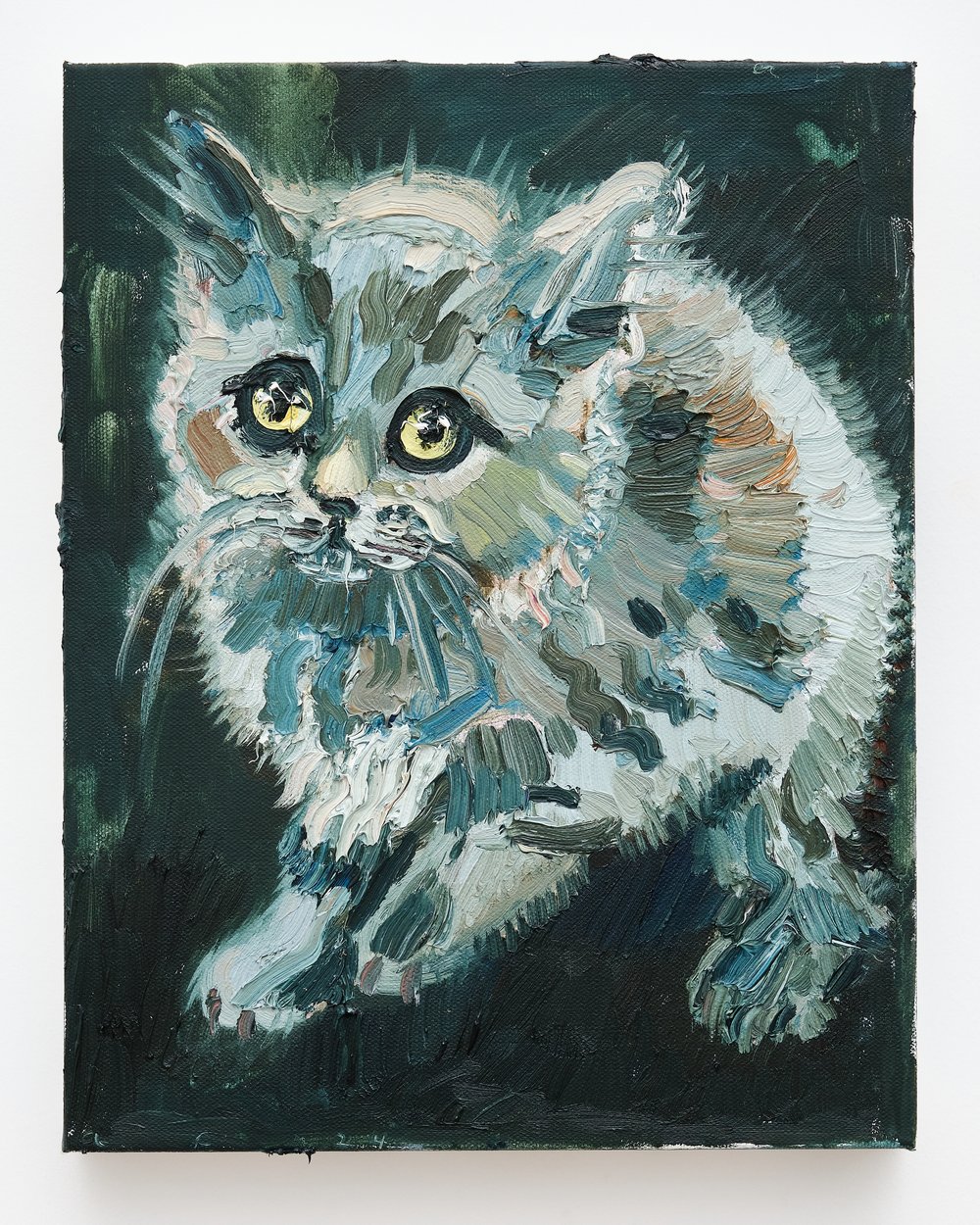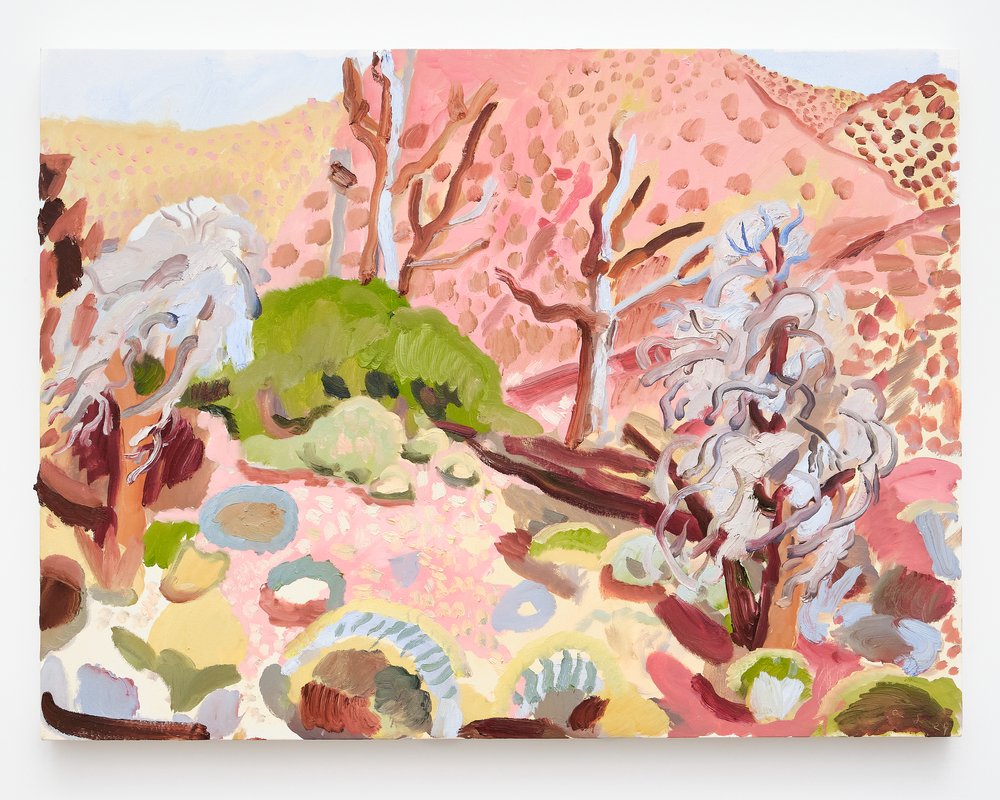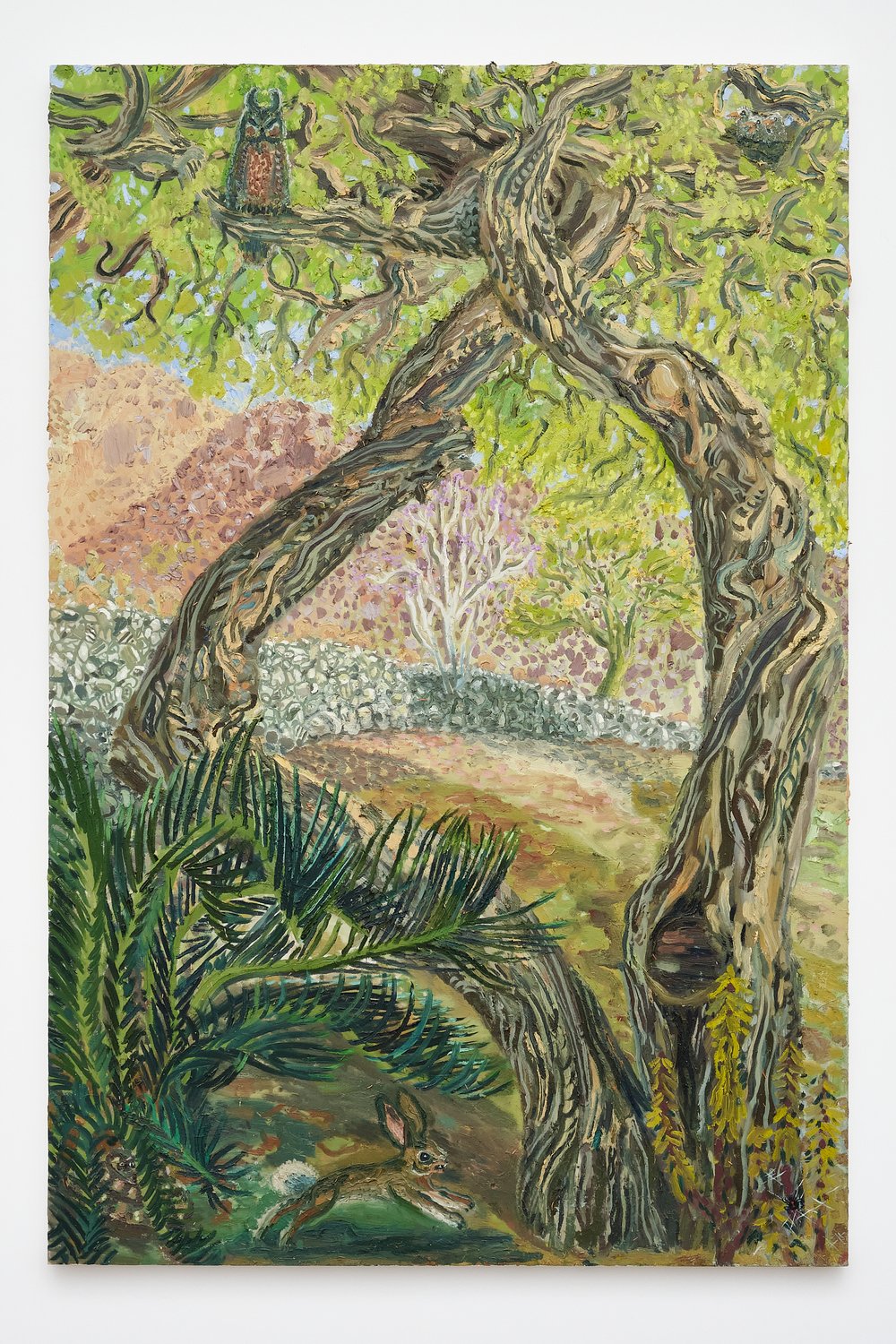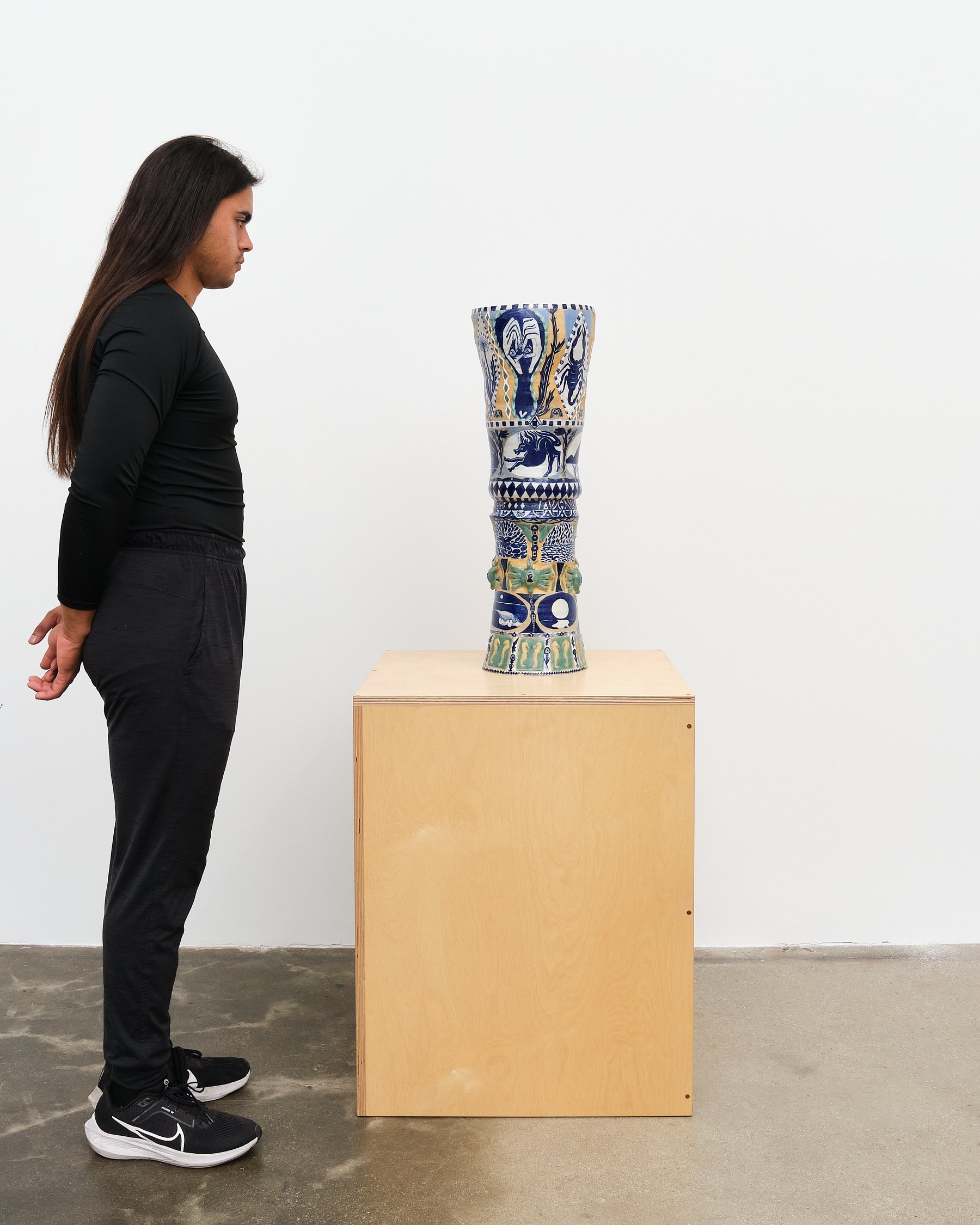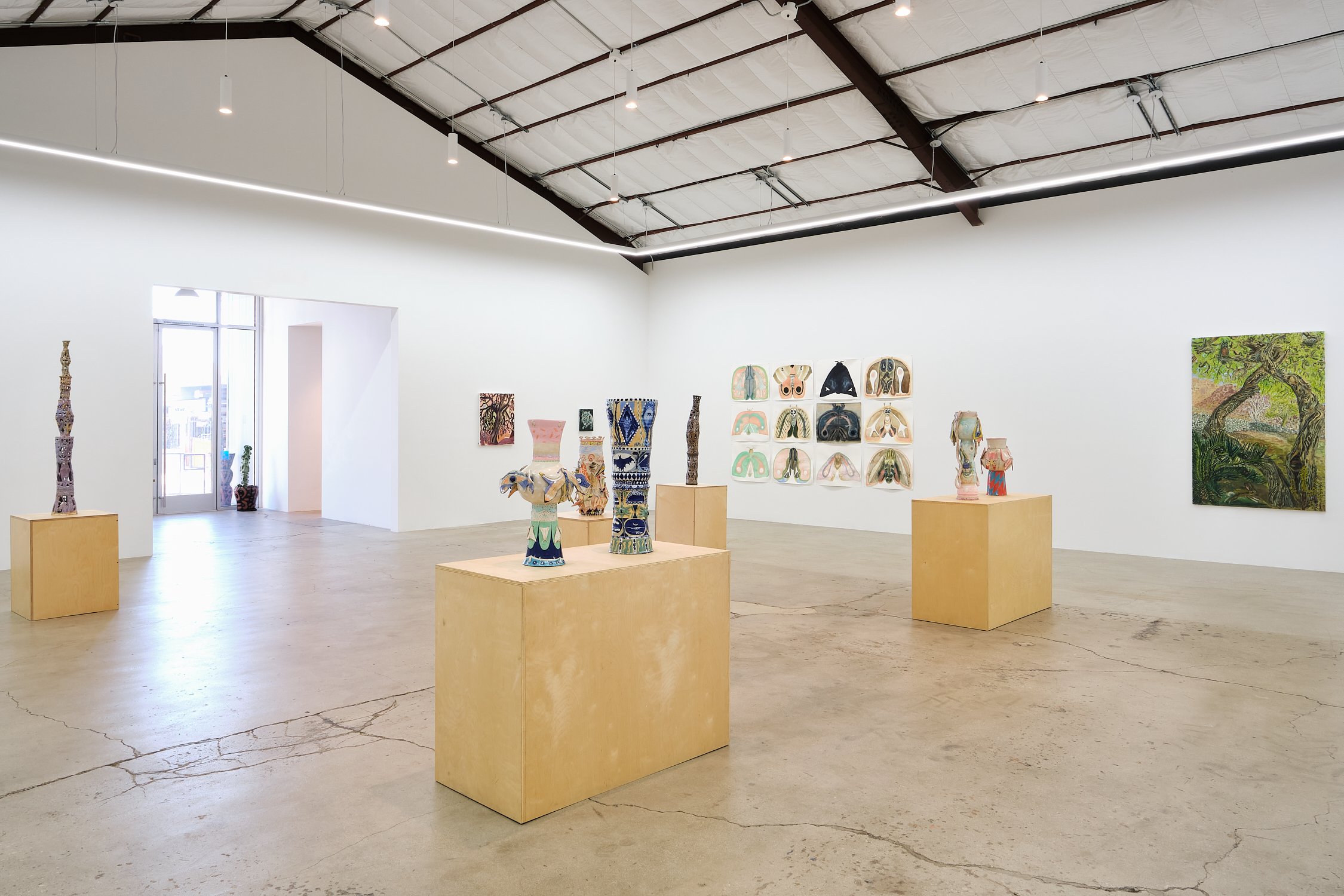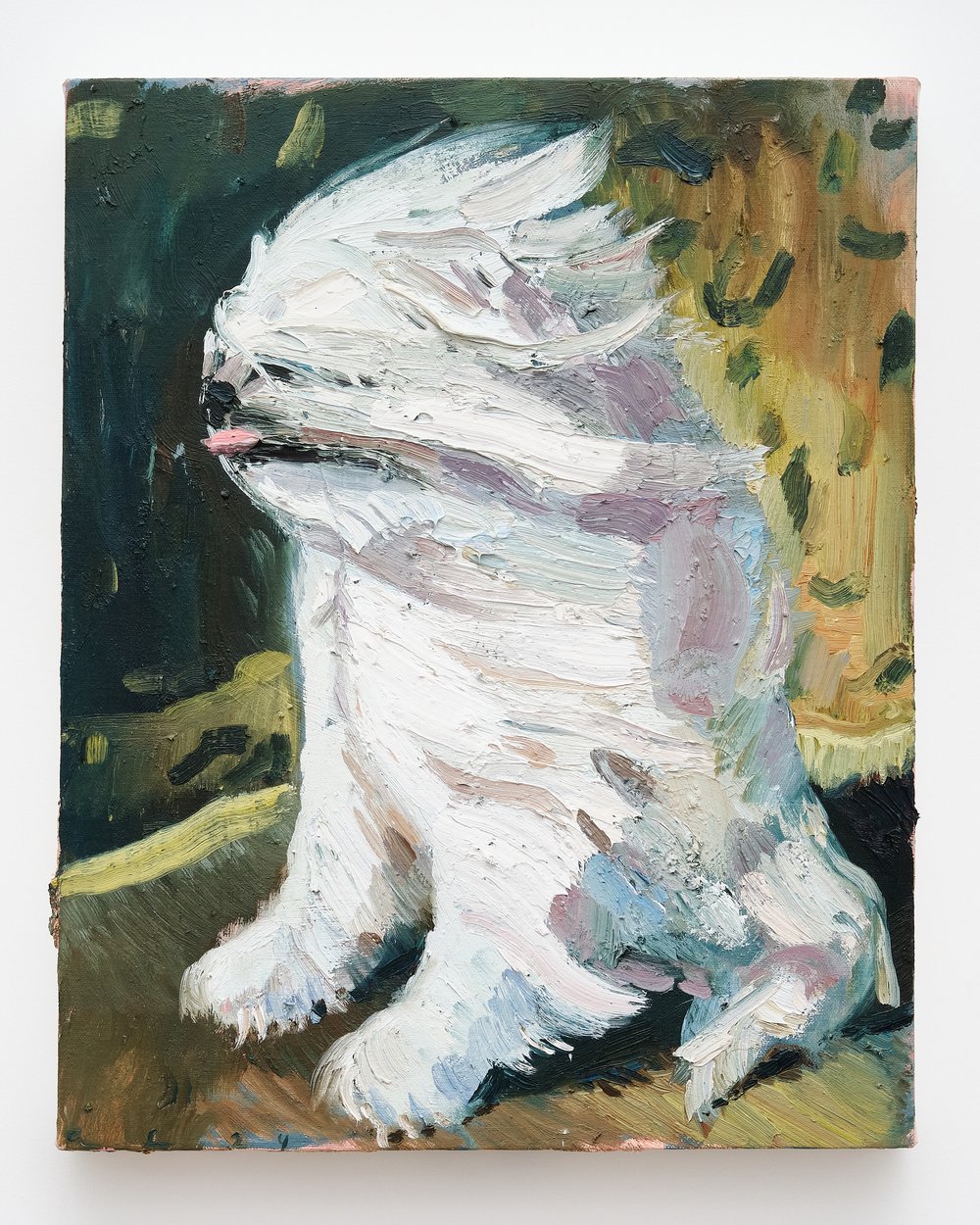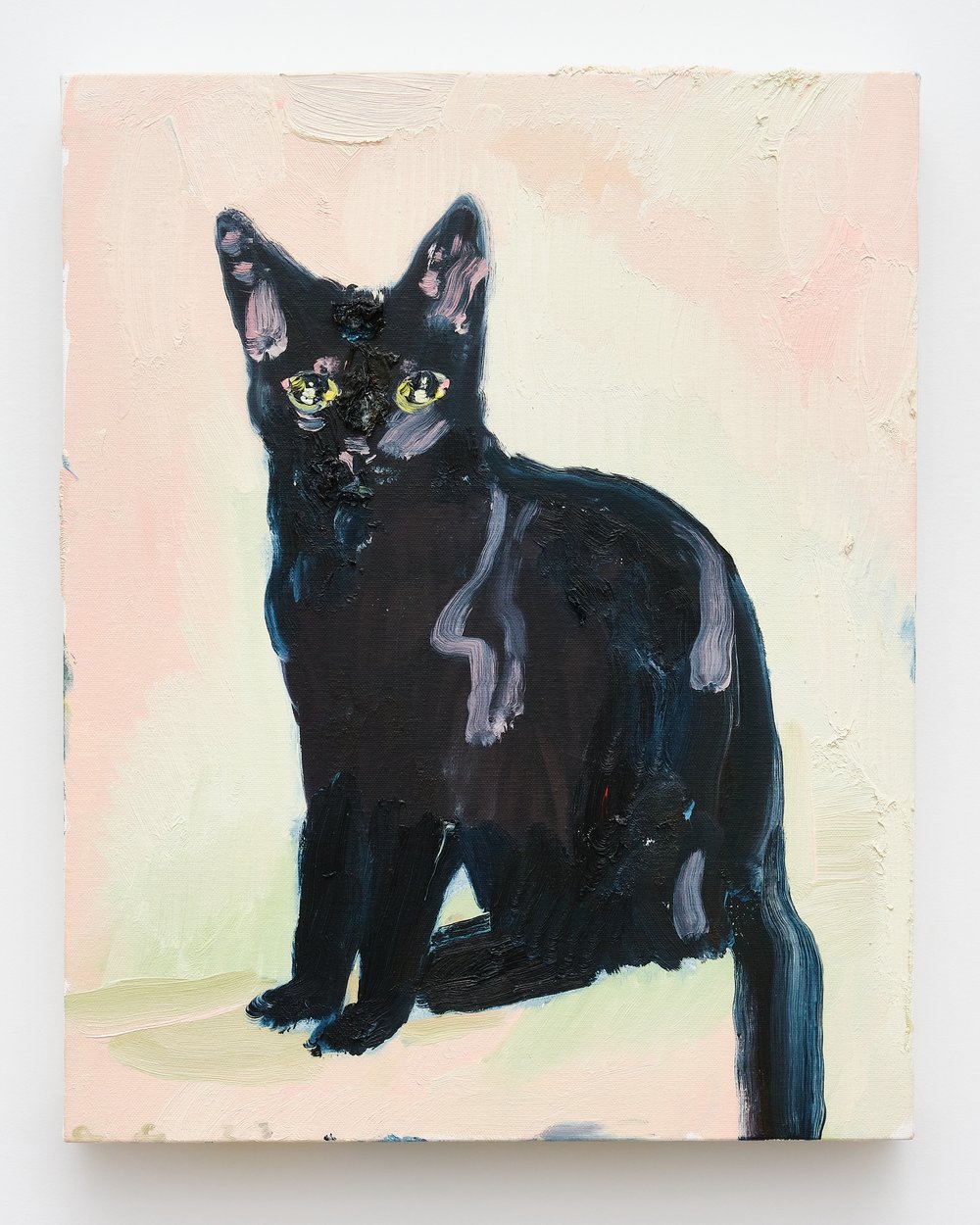The Pit is pleased to present Dumb Phone, a solo exhibition of new works by California artist Allison Schulnik, her first solo exhibition with the gallery. The exhibition will be on view through December 21, 2024.
When the speaker in T.S. Eliot’s The Love Song of J. Alfred Prufrock says, "I have measured out my life with coffee spoons," he means to say his life is burdened by the mundane. But for painter, sculptor, and filmmaker Allison Schulnik, spoons and all the quotidian activities they represent—nourishing loved ones, acts of service, comfort, and care, the routine demands of communal living—are from what a meaningful life is made.
Schulnik reifies this sentiment in her remarkable Journal Spoons, comprised of 200 handbuilt spoons embellished with diaristic notes, renderings of fabulist creatures, local flora and fauna, cosmic iconography, along with traditional Delftware patterns and motifs. When viewed together, the cobalt and porcelain-white utensils, imagine the generative possibilities of choosing daily to ‘put down your phone,’ as one spoon suggests, and engage the human and more-than-human world—embracing the mundane, magical, familiar, and mysterious.
The wonders that await perception are affectionately imagined across the ceramics, oil paintings, and gouache-on-paper works comprising Schulnik’s “Dumb Phone." For the artist, who lives in the desert with her young daughter, revelations take the form of sprawling mesquite trees, avian sphinx moths, and the animals that live in and around her home: dogs, cats, coyotes, owls, and wild hares. No matter the medium, Schulnik’s process begins with observation and sketching in her notebook. Duly, a sense of spontaneity, an ecstatic fidelity to life as it is, permeates her work.
Her paintings often imagine ephemeral moments: a gust of wind pressing a shaggy dog’s fur flat to his face, a wave cresting over a craggy rock formation, the florid eventide sky suspended between sunset and night. The delight she takes in the physicality of her materials—the viscosity of oil paint, the vigor of color—augmented by the unabashed reverence she feels for her subjects produces images that appear on the verge of escaping their two-dimensional planes and emerging as living, breathing, substantive beings. The yellowed-eyed kitten’s mottled fur in Smoke #1, 2024, appeals so strongly to a sense of touch that one has to resist the urge to reach out and flatten the ruffled fell between their tufted ears.
Schulnik’s ethereal pastel ceramics also affect a heightened tactility but in the service of different ends. Rather than primarily mimetic, the dynamic array of textures preserves the artist’s process, the physical act of transforming by hand rough-hewn clumps of earthen clay. The handbuilt quality of the embellishments is further emphasized by the elegant formality of the wheel-thrown vessels they’re mounted upon. Elemental yet rarefied, the vases appear both ancient and contemporary.
The energetic specter of the maker, quickened by fingerprints, pinch marks, and patchwork, animates the swarm of butterflies, centipedes, flies, and snakes gathered like moths to a flame across Moth Pot #2, 2024. Elsewhere, the female figure behind the works appears herself, albeit in a transfigured form, peering out from between voluptuous folded wings in Moth Women Pot with Rattlers, 2024.
Rendered luminous, otherworldly, in gouache on paper, the painted moths assume a mythical grandeur. Buried in their blush, teal, and umber bodies, the promise of transformation and the possibility that, even now, everything is not as it seems—lest we forget, the process of metamorphosis begins in decay.
For Schulnik and all of us, hope comes with opening our eyes and seeing the wonder that’s been here the entire time.—Tara Anne Dalbow

